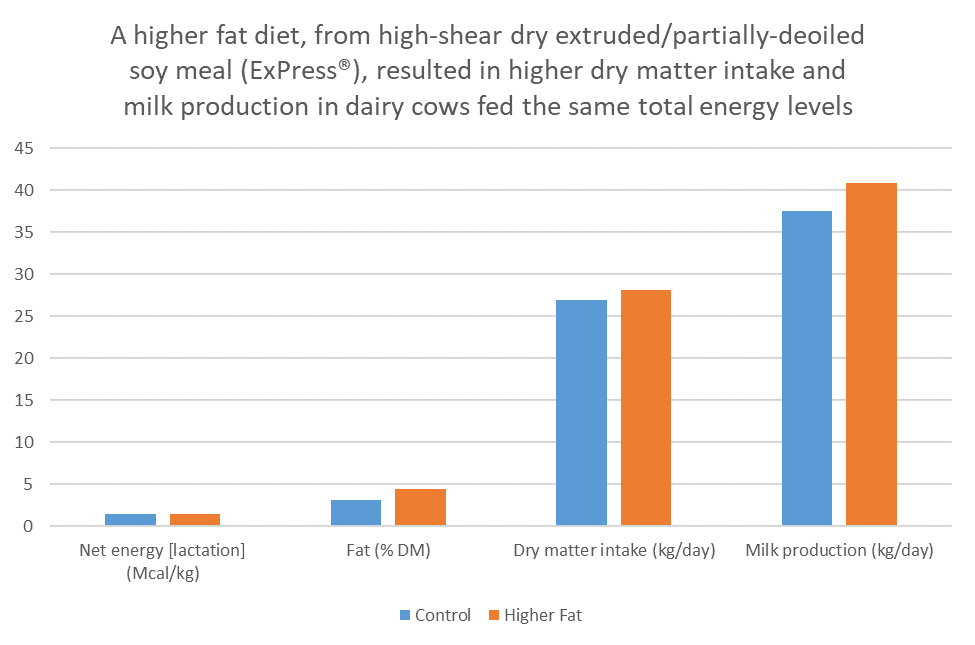Benefits of Higher Fat Diets: Part 2, Effect on Intake and Performance

I wrote part 1 of this blog series on the benefits of higher fat diets in which I defined typical dietary fat ranges for a variety of species. In part 2, we’ll get into why nudging the level of total dietary fat upward, while staying within normal ranges, is a good idea. This blog will primarily focus on intake and performance.
The amount of feed intake is always an important part of any operation, especially as it relates to body weight gain or performance. This calculation, referred to as feed efficiency or feed conversion, is critical because it indicates how much salable product (meat, milk, eggs, and so on) will be produced relative to the most expensive input: feed.
As I’ve discussed before on the blog, supplying more energy in the diet as fat typically lowers feed intake even when the total amount of metabolizable energy (i.e., that which can be used for productive purposes) in the diet is equal (I used a swine example with soybean oil and finely-ground corn here). This means that growth performance can be maintained, even though less feed is used, resulting in greater feed efficiency.
But, there’s a challenge here that must be discussed. Minimizing feed intake (and wasted feed) while maximizing output is important, but at some point, does feed intake decline too much? Simply put, does using too much fat reduce intake and growth performance to the point that productive output (days to market, milk production, etc.) is reduced?
The good news is that, within normal ranges of fat usage, this doesn’t appear to be a problem. In fact, using higher fat diets is beneficial when relating productive output to feed intake. For example, when chickens and turkeys were fed increasing levels of dietary fat (as soybean oil – a maximum of 8.1% fat in the diet was used), both body weight gain and feed efficiency increased.
For swine, we’ve shown similar data in this blog. The group with the most fat (as quality animal fat, and at 6.5% of the diet) exhibited the greatest daily gains in body weight, but also had numerically reduced intake.
In some situations, adding an ingredient with a little more fat will increase both intake and performance. Take data from this study on dairy:

So, with all of this taken together, dietary fat levels can be nudged up in diets, within typical ranges, intake can be altered, and performance can be improved. This has a couple important implications.
First of all, as previously mentioned, the most expensive input for livestock producers is the cost of feed. For example, if the amount of feed intake could be reduced, while maintaining or improving performance, this could result in savings for the producer.
Secondly, what you may have inferred from this data is that shifting more energy to fat (while keeping the total constant) is causing other, beneficial changes within the animal – changes that are altering intake and performance. In addition, the type and quality of the fat source are important. In future posts, I will discuss these changes, what they mean, and how they happen.

